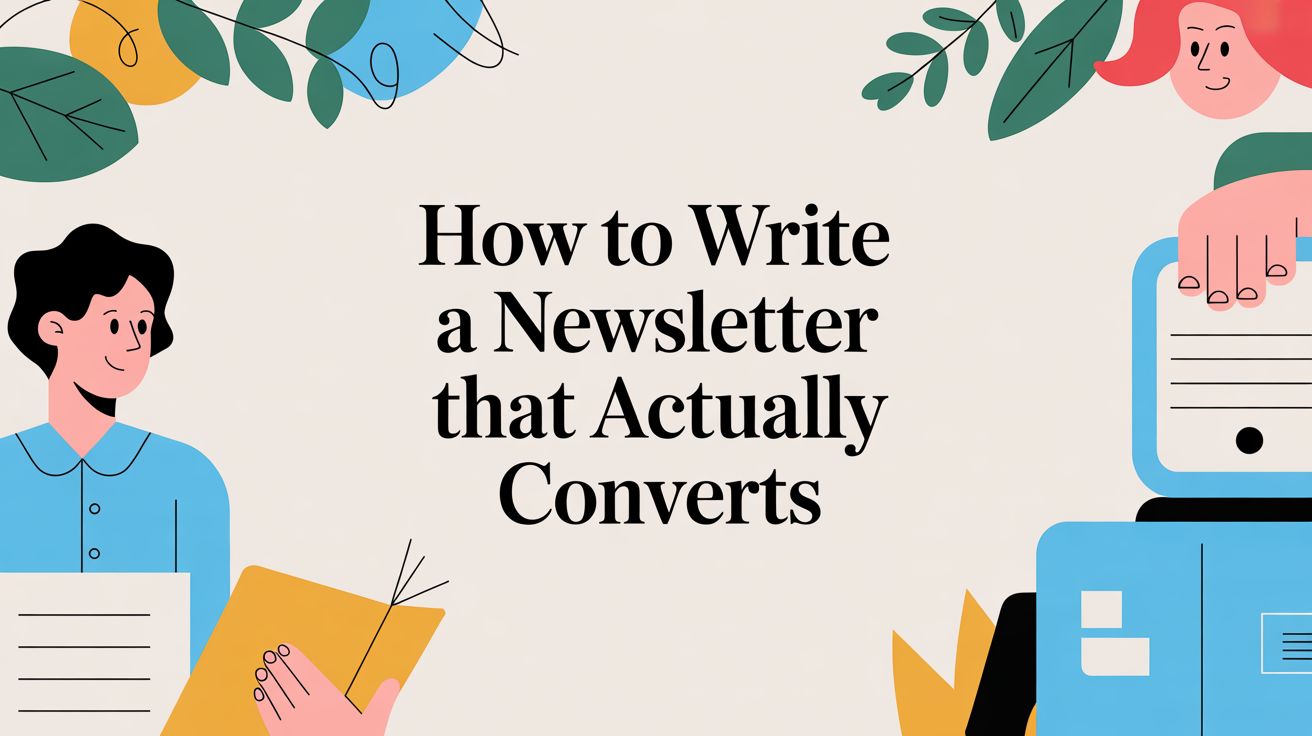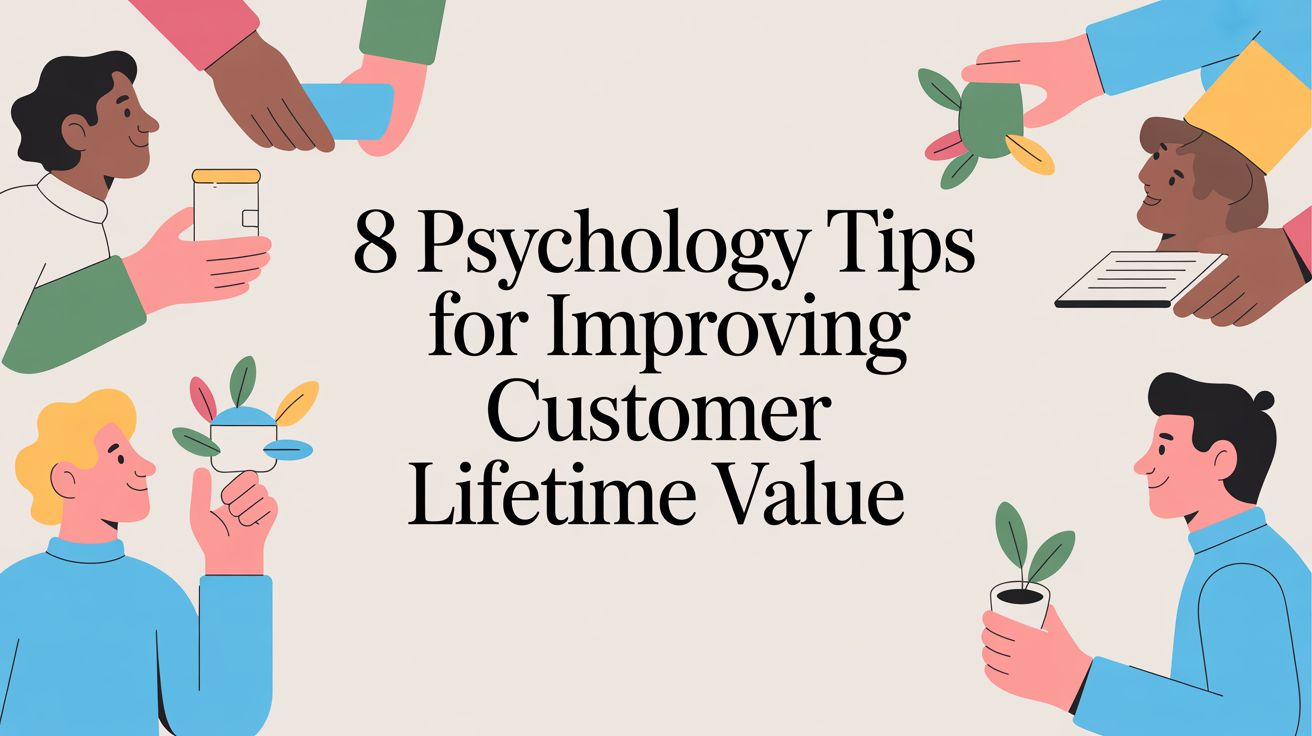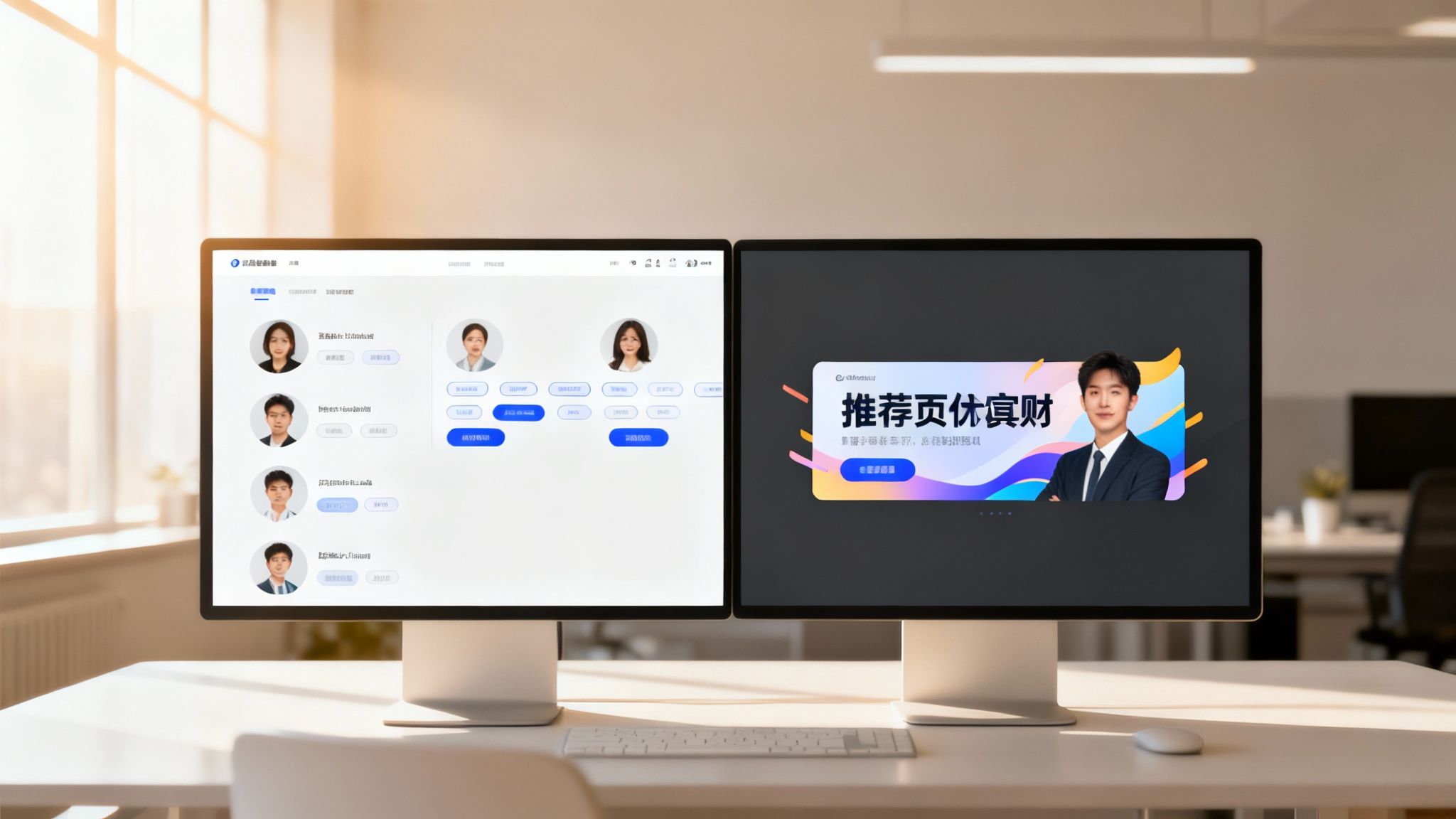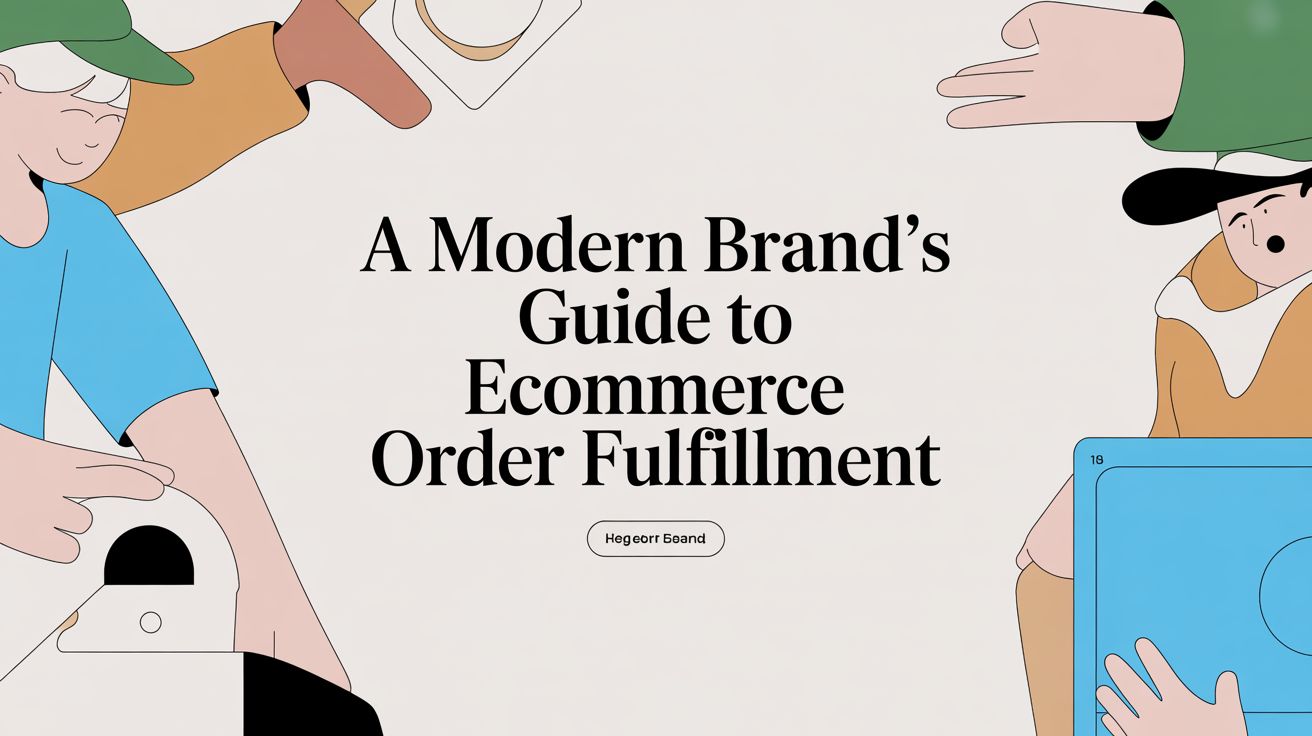
8 Psychology Tips for Improving Customer Lifetime Value

In e-commerce, the single transaction is no longer the ultimate goal. The real measure of sustainable growth lies in improving customer lifetime value (CLV). This isn't just another metric; it's a strategic imperative that directly impacts your bottom line, protects profit margins, and stabilizes inventory demand. While many stores focus intensely on the first purchase, elite Shopify Plus and enterprise brands understand that lasting success comes from what happens after the initial conversion.
This shift in focus is crucial. With industry benchmarks showing a staggering 70% cart abandonment rate and an average e-commerce conversion rate of just 2.5%, every new customer acquisition is a significant investment. The key to maximizing ROI is transforming those hard-won buyers into loyal, repeat purchasers. Doing so requires a sophisticated understanding of consumer psychology, moving beyond basic countdown timers to deploy advanced behavioral triggers grounded in principles like scarcity, social proof, and anticipation. Crucial to maximizing customer value is the ability to accurately measure the effectiveness of your marketing efforts, as detailed in this guide on Measuring Marketing Campaign Effectiveness.
This article provides a comprehensive blueprint for achieving just that. We will break down eight powerful, psychology-backed strategies designed to forge deep customer relationships and systematically increase CLV. From data-driven segmentation to strategic upselling and community building, each point offers actionable takeaways you can implement immediately. You will learn how to turn a single purchase into a predictable, long-term revenue stream, positioning your brand as an indispensable part of your customer's journey from their first click to lifelong loyalty.
1. Harnessing Anticipation with Advanced Personalization and Segmentation
Advanced personalization moves far beyond simply using a customer's first name in an email. It leverages the powerful psychological principle of anticipation, making customers feel deeply understood and genuinely excited for what you'll offer next. By segmenting your audience and tailoring experiences based on their behavior, you create a sense of individual recognition that builds loyalty and drives higher-value repeat purchases. This strategy is key to improving customer lifetime value (CLV) by delivering hyper-relevant experiences that foster a lasting connection.

This approach transforms customer data into dynamic, revenue-generating interactions. For Shopify Plus merchants, this means integrating tools like Klaviyo to trigger personalized urgency marketing "Moments" from a platform like Quikly based on specific segment behaviors, such as a high-value customer viewing a new product line or a one-time buyer showing renewed interest. Instead of a generic popup that simply captures an email, they receive a tailored offer that feels exclusive and timely, directly generating revenue.
Why It Works: Real-World Impact
The ROI of sophisticated personalization is well-documented by industry leaders. Behavioral economics research shows that personalization reduces cognitive load, making purchase decisions easier. Amazon's recommendation engine famously drives an estimated 35% of its total sales by doing just this. Similarly, Netflix saves over $1 billion annually by using personalized content suggestions to reduce churn, proving that understanding individual preferences is directly tied to retention and revenue.
Actionable Implementation Tips
Ready to move beyond basic personalization? Here are actionable steps to get started:
- Start with RFM Analysis: Segment customers using Recency, Frequency, and Monetary (RFM) analysis. This provides a clear framework to identify your most valuable customers, those at risk of churning, and new high-potential buyers for targeted campaigns.
- Combine Data Sources: For the most accurate picture, blend zero-party data (information customers willingly provide, like quiz results) with first-party behavioral data (purchase history, pages viewed). This powers sophisticated automation that basic timer apps can't match.
- Deploy Dynamic Content: Begin by implementing dynamic content blocks in your email campaigns. Show different product recommendations or offers to different segments within the same email deployment, a low-cost way to test your strategy.
- Integrate with Urgency Science: Connect your Shopify store to a sophisticated urgency marketing platform that integrates with Klaviyo or your SMS provider. Trigger personalized "Moments" based on segment-specific behaviors to create highly relevant, revenue-driving events instead of static popups. For an in-depth guide on creating effective segments, explore these customer segmentation examples.
2. Customer Loyalty Programs
Customer loyalty programs are structured marketing strategies designed to reward repeat purchases and foster ongoing brand engagement. They tap into the psychological principle of reciprocity, where customers feel compelled to give back to a brand that provides them with consistent value. By creating a system of points, tiers, and exclusive benefits, businesses can systematically increase purchase frequency and average order value, turning transactional buyers into emotionally connected brand advocates. This strategy is a cornerstone for improving customer lifetime value (CLV) by making repeat business a rewarding and gamified experience.
This approach transforms customer loyalty from a hopeful outcome into a measurable, predictable revenue stream. For Shopify Plus merchants, this means integrating loyalty platforms like Yotpo or LoyaltyLion directly with their CRM and marketing automation tools, such as Klaviyo. This allows for hyper-targeted campaigns, such as offering bonus points to a high-value customer segment for purchasing a new product or sending an expiring points notification to re-engage a dormant customer. Instead of just another transaction, each purchase becomes a step toward a meaningful reward.
Why It Works: Real-World Impact
The financial impact of well-executed loyalty programs is undeniable. Amazon Prime, with over 200 million members, sees its members spend two to three times more annually than non-members. Similarly, Sephora's Beauty Insider program, which has over 25 million members, attributes a staggering 80% of its total sales to program participants. These figures prove that creating a rewarding ecosystem is directly linked to higher spending and long-term retention.
Actionable Implementation Tips
Ready to build a loyalty program that drives revenue? Here are actionable steps to get started:
- Simplify the System: Ensure the process for earning and redeeming rewards is simple and transparent. Complex rules create friction and discourage participation. Customers should always know how close they are to their next reward.
- Offer Experiential Rewards: Move beyond simple discounts. Offer exclusive access to products, invites to special events, or personalized consultations to create a deeper emotional connection with your brand.
- Implement a Tiered Structure: Use tiers (e.g., Silver, Gold, Platinum) to motivate customers to increase their spending. The allure of unlocking greater benefits leverages the psychological desire for status and achievement, a principle known as "gamification."
- Create Strategic Urgency: Integrate urgency into your program by using expiring points or limited-time bonus point opportunities. This tactic, based on the principle of loss aversion, combats program apathy and drives immediate action. For more ideas on maintaining engagement, explore how to drive loyalty program stickiness and revenue.
3. Exceptional Customer Service and Support
Exceptional customer service transforms a transactional relationship into a powerful emotional connection. It goes beyond simply resolving issues; it's about creating memorable, positive experiences that make customers feel seen, heard, and valued. This proactive and empathetic approach is a cornerstone strategy for improving customer lifetime value (CLV) by significantly reducing churn and fostering the kind of loyalty that turns buyers into vocal brand advocates.

This philosophy embeds service into the company's DNA, making it a competitive advantage rather than a cost center. For Shopify Plus merchants, this means integrating helpdesks like Gorgias or Zendesk not just to manage tickets, but to create a unified view of the customer. An agent can see a VIP's entire order history and proactively offer a solution that reflects their high value, turning a potential complaint into a moment of delight that strengthens the relationship.
Why It Works: Real-World Impact
The business case for superior service is undeniable. Studies in consumer psychology show that emotional experiences are far more memorable than transactional ones. Zappos built its billion-dollar brand on legendary support, including 365-day returns and famously long support calls, proving that service is the marketing. Similarly, Chewy cultivates deep emotional loyalty by sending handwritten sympathy cards when a customer's pet passes away, an act of empathy that secures a customer for life. These actions create powerful psychological reciprocity, making customers feel indebted and eager to repurchase.
Actionable Implementation Tips
Ready to make customer service your key differentiator? Here are concrete steps to elevate your support:
- Empower Your Frontline: Give your support agents the authority to solve problems on the spot. Ritz-Carlton famously empowers every employee with a $2,000 discretionary budget per guest to resolve issues without seeking manager approval.
- Measure Customer Effort: Focus on the Customer Effort Score (CES). This metric measures how easy it is for a customer to get their issue resolved. A low-effort experience is a strong predictor of repeat business.
- Create a Closed-Loop Feedback System: Don't just collect feedback; act on it. When a customer reports an issue, follow up with them personally to let them know how their feedback led to a specific improvement. This shows you're listening and reinforces their value.
- Hire for Empathy, Train for Skill: You can teach someone how to use your software, but it's much harder to teach genuine empathy and a positive attitude. Prioritize these soft skills in your hiring process to build a truly customer-centric team culture.
4. Building Predictable Revenue with Subscription and Membership Models
Subscription and membership models fundamentally transform one-time transactions into predictable, recurring revenue streams. By offering products or services on a regular basis for a fixed fee, you create a powerful flywheel of customer loyalty and financial stability. This strategy shifts the focus from individual sales to long-term relationships, dramatically improving customer lifetime value by embedding your brand into a customer's routine. Whether for physical goods, software, or exclusive content, subscriptions foster ongoing engagement and reduce the constant pressure of new customer acquisition.
This approach creates a powerful and direct line to your customer base, offering unparalleled opportunities for communication and value delivery. For Shopify Plus merchants, this means integrating platforms like Recharge or Bold Subscriptions to manage recurring billing, customer portals, and retention campaigns seamlessly. Instead of a single purchase, the relationship evolves, allowing you to gather continuous feedback and refine your offerings based on real subscriber behavior.
Why It Works: Real-World Impact
The success of the subscription economy is undeniable. Dollar Shave Club challenged a massive incumbent and was acquired by Unilever for $1 billion by turning a simple commodity into a convenient subscription. Similarly, Peloton built a multi-billion-dollar business not just by selling hardware, but by locking in high-value recurring revenue through its $44/month membership, demonstrating the model's immense power to increase CLV.
Actionable Implementation Tips
Ready to transition from transactional sales to recurring relationships? Here are actionable steps to get started:
- Offer a Discounted Annual Option: Encourage long-term commitment and improve cash flow by providing a significant discount for customers who pay for a year upfront. This single action can drastically reduce churn.
- Focus on the First 60 Days: The initial onboarding period is critical. Create a dedicated email or SMS flow to demonstrate your product's value, offer tips, and solicit feedback to ensure new subscribers feel successful and engaged from day one.
- Implement Proactive Churn Reduction: Use data to identify at-risk subscribers, such as those with declining engagement or payment issues. Intervene with targeted win-back campaigns, special offers, or surveys before they cancel.
- Make Cancellation a Learning Opportunity: Provide an easy cancellation process to maintain goodwill. However, use the exit survey to gather invaluable feedback and present alternative options, like pausing the subscription or switching to a different plan.
5. Customer Education and Onboarding
Customer education involves creating comprehensive programs and content that help customers fully understand and maximize the value they get from your products. It begins with effective onboarding, which guides new users through their first experiences to ensure they achieve early wins. This strategy is foundational for improving customer lifetime value by tackling churn at its most critical point: the beginning. By turning initial curiosity into confident usage, you build a foundation for deeper product adoption and transform your brand from a simple vendor into a trusted advisor.
This approach directly reduces churn and accelerates the time-to-value, a critical metric for any business. For Shopify merchants, this could mean an automated email sequence that guides a new customer on how to care for their first purchase or a video tutorial series demonstrating advanced features of a complex product. The goal is to eliminate confusion and empower the customer, making them feel successful and smart for choosing your brand.
Why It Works: Real-World Impact
The ROI on education is seen in the world's most successful brands. HubSpot Academy offers free certifications that have educated hundreds of thousands of professionals, turning them into loyal product evangelists. Similarly, Salesforce's Trailhead gamified learning platform has created millions of certified users who become internal champions, driving platform expansion within their companies. These examples prove that investing in customer success through education pays significant long-term dividends.
Actionable Implementation Tips
Ready to build a powerful education and onboarding program? Here’s how to start:
- Map Critical Milestones: Identify the key "aha!" moments in your customer journey. What actions must a new customer take to see the core value of your product? Build your onboarding around guiding them to these wins.
- Celebrate Early Wins: Use in-app messages, emails, or even small rewards to acknowledge when a customer completes a key step. This builds momentum and reinforces their decision to buy from you.
- Implement a Drip Campaign: Don't overwhelm new customers. Create an automated email or SMS sequence (using tools like Klaviyo) that delivers educational content over time, introducing new features or use cases progressively.
- Offer Multiple Learning Formats: Cater to different learning preferences by providing a mix of video tutorials, text-based guides, interactive walkthroughs, and FAQs. Canva's Design School is a masterclass in this, enabling non-designers to succeed with their platform.
6. Strategic Upselling and Cross-selling
Upselling and cross-selling are foundational tactics for improving customer lifetime value by increasing the average order value (AOV) of each transaction. Upselling encourages customers to purchase a more advanced or premium version of a product, while cross-selling suggests complementary items that enhance their primary purchase. When executed with a focus on customer needs, these strategies transform a single transaction into a comprehensive solution, fostering deeper loyalty and significantly boosting revenue.
This approach goes beyond just showing more products; it's about anticipating the customer's next need and presenting a solution at the perfect moment. For Shopify merchants, this can be automated with apps that suggest relevant product bundles on the product page or offer a one-click post-purchase upsell, capitalizing on existing buying intent without creating friction. It’s about making the customer feel guided toward a better outcome, not pushed toward a bigger sale.
Why It Works: Real-World Impact
The financial impact of strategic recommendations is massive and proven by the world's largest companies. Amazon's recommendation engine, which powers its "Frequently bought together" and "Customers who bought this also bought" features, is a masterclass in algorithmic cross-selling that drives billions in additional revenue. Similarly, Apple’s ecosystem is a prime example of cross-selling, where an iPhone purchase naturally leads to AirPods, an Apple Watch, and iCloud subscriptions, creating powerful customer lock-in and a much higher CLV.
Actionable Implementation Tips
Ready to integrate upselling and cross-selling into your customer journey? Here are specific steps to get started:
- Time Offers Based on Value: Present upsell opportunities after a customer has experienced initial value from their purchase. For a software product, this could be triggered by high usage; for a physical product, it could be a follow-up email campaign weeks after delivery.
- Frame Upgrades as Solutions: Don't just list more features. Frame the upsell as the solution to a specific problem the customer might face. For example, instead of "Upgrade to 100GB," use "Never run out of space for your memories again."
- Bundle Products Strategically: Create compelling product bundles that offer a clear discount compared to buying items individually. This increases the perceived value and simplifies the purchasing decision for complementary products.
- Train Your Frontline Teams: Equip your customer support and sales teams with the skills to ask discovery questions. Understanding a customer's goals allows them to recommend relevant upsells or cross-sells that genuinely help, turning a support interaction into a revenue opportunity.
7. Community Building and Customer Engagement
Building a community creates a dedicated space where customers can connect with each other and your brand beyond simple transactions. This strategy taps into the powerful psychological need for belonging, transforming passive buyers into active brand advocates. By fostering these emotional connections, you create significant switching costs that aren't based on price or features, but on relationships. This deepens engagement and provides powerful social proof, making it an essential tactic for improving customer lifetime value.

This approach turns your customer base into a self-sustaining ecosystem of support, feedback, and user-generated content. For Shopify merchants, this could mean creating an exclusive Facebook group for VIP customers to share styling tips, or using a platform like Circle.so to host discussions and virtual events. These spaces become valuable assets, providing insights directly from your most engaged users while organically promoting your products.
Why It Works: Real-World Impact
The financial return on a strong community is significant. Harley-Davidson's iconic Harley Owners Group (H.O.G.) boasts over one million members who reportedly spend 30% more on average than non-member customers. Similarly, Sephora's Beauty Insider Community has cultivated millions of members who generate authentic product reviews and tutorials, providing invaluable social proof that drives purchases and builds trust far more effectively than traditional advertising.
Actionable Implementation Tips
Ready to build a thriving community around your brand? Here are actionable steps to get started:
- Empower Brand Advocates: Identify your most passionate customers ("superusers") and grant them special recognition, early access to products, or exclusive benefits. This encourages them to lead conversations and champion your brand.
- Facilitate Peer-to-Peer Connections: Structure your community to encourage member-to-member interactions, not just brand-to-member announcements. Use prompts, contests, and member spotlights to spark conversations.
- Host Regular Events: Strengthen bonds by hosting consistent virtual or in-person events. These could be Q&A sessions with your team, educational workshops, or informal meetups that reinforce the sense of shared identity.
- Create a Feedback Loop: Actively listen to community discussions and, more importantly, demonstrate how that feedback influences your product development or business decisions. This shows members they are valued partners, not just consumers. For a deeper dive into this topic, review these best practices for consumer engagement.
8. Data-Driven Customer Health Monitoring and Proactive Intervention
Waiting for a customer to cancel their subscription or stop purchasing is a reactive, costly mistake. Data-driven customer health monitoring shifts this paradigm, using predictive analytics to identify churn risks and expansion opportunities before they happen. By tracking engagement metrics, support interactions, and usage patterns, you can assign a "health score" to each customer, enabling proactive intervention that directly protects and grows revenue. This strategy is essential for improving customer lifetime value by turning data into preventative action and targeted growth initiatives.
This proactive approach transforms your customer success and marketing efforts from guesswork to a data-backed science. For Shopify merchants, this involves integrating data from your storefront, support tools like Zendesk, and email platforms like Klaviyo to build a holistic view of customer health. Instead of discovering a valuable customer has churned after the fact, you receive an early warning signal, such as a drop in login frequency or an increase in support tickets, allowing you to intervene with a personalized solution.
Why It Works: Real-World Impact
The financial impact of proactive customer success is significant. Companies like Gainsight and ChurnZero have built entire platforms on this principle, helping B2B SaaS companies reduce churn by as much as 20-40% through automated health monitoring and intervention playbooks. Similarly, Spotify analyzes listening patterns to identify users at risk of canceling, then deploys personalized re-engagement campaigns to retain them, demonstrating that understanding engagement is key to preventing attrition.
Actionable Implementation Tips
Ready to start monitoring your customer base's health? Here are actionable steps to implement this strategy:
- Define Health Indicators: Identify the key metrics specific to your business that signal a healthy (or unhealthy) customer. For e-commerce, this could be purchase frequency, average order value, and email engagement. For SaaS, it might be feature adoption and login frequency.
- Create Intervention Playbooks: Develop standardized responses for different risk scenarios. A low-risk customer might receive an automated email with helpful content, while a high-value, high-risk customer should trigger a personal outreach from your success team.
- Start with Leading Indicators: Don't just track lagging indicators like churn. Focus on leading indicators like a decline in session duration or a drop in repeat purchase rate, as these give you time to act.
- Combine Quantitative and Qualitative Data: Blend hard metrics (usage data) with qualitative feedback from surveys and support conversations. A customer might have high usage but be deeply unsatisfied, a critical insight that numbers alone can miss. For a deeper dive into key metrics, explore this guide on customer success KPIs.
8 Strategies to Boost Customer Lifetime Value
| Strategy | Implementation Complexity | Resource Requirements | Expected Outcomes | Ideal Use Cases | Key Advantages |
|---|---|---|---|---|---|
| Personalization and Customer Segmentation | High – requires advanced data infrastructure | Significant data collection and AI tools | Higher engagement, conversions, CLV growth | Multi-channel marketing, e-commerce | Precise targeting, increased conversion rates |
| Customer Loyalty Programs | Medium – moderate program design complexity | Marketing, CRM integration, reward costs | Increased retention, repeat purchases | Retail, subscription businesses | Drives retention, boosts purchase frequency |
| Exceptional Customer Service and Support | High – ongoing staffing and tech investments | Customer service teams, training, tech | Reduced churn, higher satisfaction | Service-centric industries, competitive markets | Builds loyalty, positive brand reputation |
| Subscription and Membership Models | High – complex billing and management systems | Subscription platforms, customer success | Predictable revenue, higher CLV | SaaS, content, physical product delivery | Recurring revenue, stronger customer relations |
| Customer Education and Onboarding | Medium – requires content creation and updates | Content teams, training resources | Reduced churn, higher adoption rates | SaaS, complex products, high-touch sales | Accelerates time-to-value, reduces support demand |
| Strategic Upselling and Cross-selling | Medium to High – needs AI and sales training | Analytics, sales enablement, content | Increased revenue per customer | Retail, SaaS, e-commerce | Cost-effective growth, higher average order value |
| Community Building and Customer Engagement | Medium – requires ongoing management | Community managers, platform tools | Increased retention, brand advocacy | Brands seeking emotional loyalty | Emotional loyalty, peer support, network effects |
| Data-Driven Customer Health Monitoring & Intervention | High – advanced analytics and predictive models | Data science, CRM integration, AI tools | Improved retention, proactive churn prevention | SaaS, subscription, high-value accounts | Early risk detection, optimized resource use |
Integrating Urgency Science to Amplify Your CLV Strategy
Navigating the landscape of e-commerce requires moving beyond a singular focus on customer acquisition. As we've explored, the true engine of sustainable growth lies in improving customer lifetime value (CLV). The strategies detailed in this guide, from hyper-personalization and tiered loyalty programs to proactive customer health monitoring, are the foundational pillars for building enduring, profitable customer relationships. They represent a fundamental shift from transactional interactions to a more holistic, relational approach.
However, building the foundation is only the first step. The real amplification of your CLV efforts comes from integrating a sophisticated understanding of consumer psychology. This is where the science of urgency, when applied ethically and strategically, transforms a good strategy into an exceptional one.
From Static Tactics to Dynamic Moments
The eight pillars we discussed are powerful on their own, but they can become exponentially more effective when infused with precisely timed moments of engagement.
- Loyalty & Urgency: Imagine a scenario where your top-tier loyalty members don't just get early access to a new product drop; they get a personalized, limited-time window to purchase, creating a sense of exclusivity and immediate action. This isn't a generic countdown timer; it's a behaviorally-triggered event that rewards your best customers and drives immediate revenue.
- Upselling & Personalization: Instead of a static "you might also like" banner, a customer who has just purchased a high-end camera might receive a time-sensitive offer for a premium lens kit, triggered by their purchase behavior and customer segment data. This transforms a passive suggestion into an irresistible, relevant opportunity.
- Community & Engagement: A flash sale exclusively for members of your brand's Facebook group or a limited-release product drop announced only on your VIP SMS list leverages social proof and the fear of missing out (FOMO) to drive both community engagement and sales.
This approach moves beyond the limitations of basic popup apps or simple timers that often focus on a single, isolated goal like email capture. True CLV optimization requires a more intelligent system that understands the entire customer journey and deploys psychological triggers at the most impactful junctures. Platforms like Quikly are experts in this science, enhancing banners, popups, and the entire shopper journey with these next-generation urgency marketing "Moments."
The ROI of a Psychology-Driven Approach
Mastering these concepts is not just about boosting conversion rates on a single campaign; it's about fundamentally altering the financial trajectory of your business. By consistently creating compelling reasons for customers to engage and purchase, you are systematically improving customer lifetime value across your entire user base.
This has a direct and profound impact on your bottom line. It increases predictable revenue, protects profit margins by encouraging full-price purchases, and provides invaluable data on customer behavior. Instead of manually launching disjointed campaigns, you can build a sophisticated, automated system that nurtures customers from their first purchase to their tenth, consistently increasing their value to your brand.
Ultimately, the journey to a higher CLV is one of continuous optimization, powered by data and a deep understanding of human behavior. By weaving the principles of urgency, scarcity, and exclusivity into your core retention strategies, you create a powerful, self-reinforcing loop. You don't just acquire customers; you cultivate loyal brand advocates who are genuinely excited to see what you'll offer next.
Ready to move beyond basic timers and integrate sophisticated, psychology-driven urgency into your marketing? Discover how Quikly helps top Shopify and enterprise brands automate revenue-generating "Moments" that amplify retention and dramatically improve customer lifetime value. Explore the platform at Quikly and see how the science of urgency can transform your strategy.

The Quikly Content Team brings together urgency marketing experts, consumer psychologists, and data analysts who've helped power promotional campaigns since 2012. Drawing from our platform's 70M+ consumer interactions and thousands of successful campaigns, we share evidence-based insights that help brands create promotions that convert.
